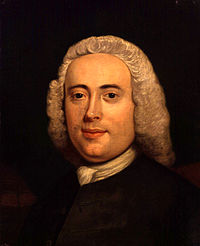
Henry Cavendish was an English natural philosopher and scientist who was an important experimental and theoretical chemist and physicist. He is noted for his discovery of hydrogen, which he termed "inflammable air". He described the density of inflammable air, which formed water on combustion, in a 1766 paper, On Factitious Airs. Antoine Lavoisier later reproduced Cavendish's experiment and gave the element its name.

William Hyde Wollaston was an English chemist and physicist who is famous for discovering the chemical elements palladium and rhodium. He also developed a way to process platinum ore into malleable ingots.

Daines Barrington, FRS, FSA was an English lawyer, antiquary and naturalist. He was one of the correspondents to whom Gilbert White wrote extensively on natural history topics. Barrington served as a Vice President of the Royal Society and wrote on a range of topics related to the natural sciences including early ideas and scientific experimentation on the learning of songs by young birds. He designed a standard format for the collection of information about weather, the flowering of plants, the singing of birds and other annual changes that was also used by Gilbert White. He also wrote on child geniuses including Mozart, who at the age of nine had visited England.
The year 1763 in science and technology involved some significant events.
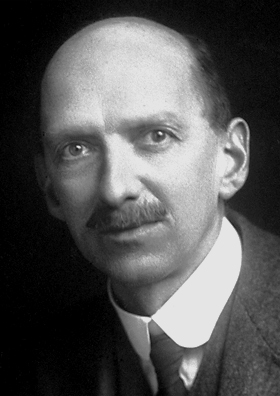
Charles Thomson Rees Wilson, was a Scottish physicist and meteorologist who won the Nobel Prize in Physics for his invention of the cloud chamber.
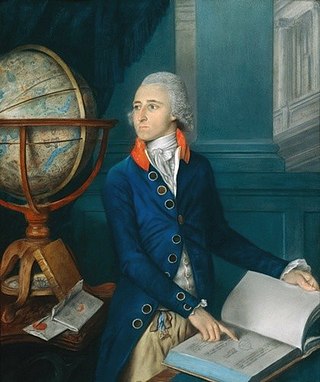
John Goodricke FRS was an English amateur astronomer. He is best known for his observations of the variable star Algol in 1782.

Tiberius Cavallo was an Italian physicist and natural philosopher. His interests included electricity, the development of scientific instruments, the nature of "airs", and ballooning. He became both a Member of the Royal Academy of Sciences in Naples, and a Fellow of the Royal Society of London in 1779. Between 1780 and 1792, he presented the Royal Society's Bakerian Lecture thirteen times in succession.

Peter Woulfe (1727–1803) was an Anglo-Irish chemist and mineralogist. He first had the idea that wolframite might contain a previously undiscovered element (tungsten).
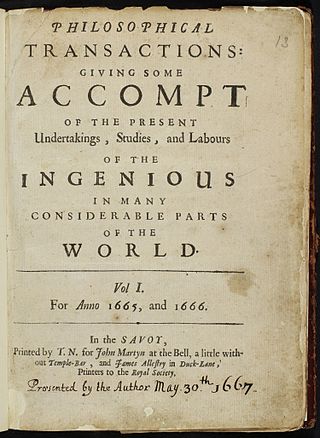
Philosophical Transactions of the Royal Society is a scientific journal published by the Royal Society. In its earliest days, it was a private venture of the Royal Society's secretary. It was established in 1665, making it the second journal in the world exclusively devoted to science, after the Journal des sçavans, and therefore also the world's longest-running scientific journal. It became an official society publication in 1752. The use of the word philosophical in the title refers to natural philosophy, which was the equivalent of what would now be generally called science.
Francis Hauksbee the Elder (1660–1713), also known as Francis Hawksbee, was an 18th-century English scientist best known for his work on electricity and electrostatic repulsion.
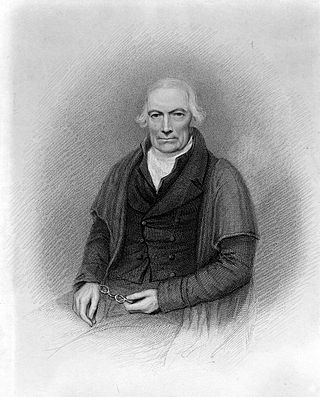
Samuel Vince FRS was an English clergyman, mathematician and astronomer at the University of Cambridge.

Sir Charles Brian Blagden FRS was an English physician and chemist. He served as a medical officer in the Army (1776–1780) and later held the position of Secretary of the Royal Society (1784–1797). Blagden won the Copley Medal in 1788 and was knighted in 1792.

Robert Were Fox FRS was a British geologist, natural philosopher and inventor. He is known mainly for his work on the temperature of the Earth and his construction of a compass to measure magnetic dip at sea.

Lord Morton’s mare was an equid hybrid and once an often-noticed example in the history of evolutionary theory.
A cryophorus is a glass container containing liquid water and water vapor. It is used in physics courses to demonstrate rapid freezing by evaporation. A typical cryophorus has a bulb at one end connected to a tube of the same material. When the liquid water is manipulated into the bulbed end and the other end is submerged into a freezing mixture, the gas pressure drops as it is cooled. The liquid water begins to evaporate, producing more water vapor. Evaporation causes the water to cool rapidly to its freezing point and it solidifies suddenly.
Augustus Matthiessen, FRS, the son of a merchant, was a British chemist and physicist who obtained his PhD in Germany at the University of Gießen in 1852 with Johann Heinrich Buff. He then worked with Robert Bunsen at the University of Heidelberg from 1853 to 1856. His work in this period included the isolation of calcium and strontium in their pure states. He then returned to London and studied with August Wilhelm von Hofmann from 1857 at the Royal College of Chemistry, and set up his own research laboratory at 1 Torrington Place, Russell Square, London. He was elected a Fellow of the Royal Society (FRS) in 1861. He worked as a lecturer on chemistry at St Mary's Hospital, London, from 1862 to 1868, and then at St Bartholomew's Hospital, London, from 1868. His research was chiefly on the constitution of alloys and opium alkaloids. He contributed to both physics and chemistry. For his work on metals and alloys, he was awarded the Royal Society's Royal Medal in 1869.
William Haseldine Pepys FGS FRS was an English scientist and founder of learned institutions who contributed significantly to the advancement of the chemical and physical sciences during the first half of the nineteenth century.
August Sigmund Frobenius, FRS, also known as Sigismond Augustus Frobenius, Joannes Sigismundus Augustus Frobenius, and Johann Sigismund August Froben, was a German-born chemist in the 18th century who is known for the first detailed description of the properties of diethyl ether and the naming of this substance.
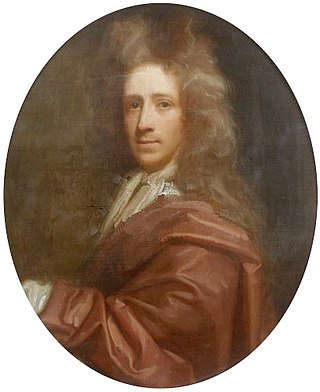
Richard Waller FRS was an English naturalist, translator and illustrator, long-time member and secretary of the Royal Society.
Father Guillaume Mazeas was a translator of English scientific works into French, a corresponding member of the French Academy of Sciences and a fellow of the Royal Society. He was canon of the cathedral of Vannes, France. He corresponded with Stephen Hales on scientific matters, including his experiences with the lightning rod invented by Benjamin Franklin. His investigations of red dyeing in the East Indies and their improvement in France were of significant industrial value.
